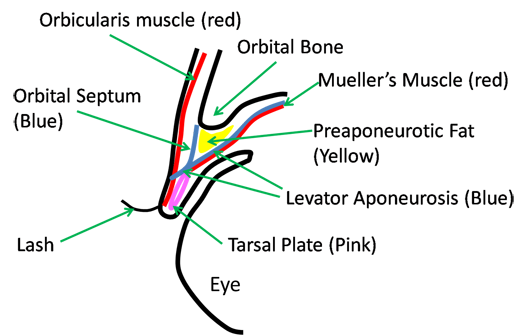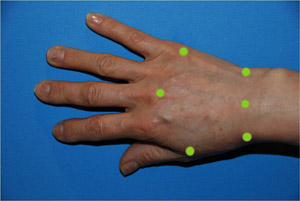There are many options with Asian Double Eyelid Crease Formation (Dr Young Seattle) including whether to use incisions or not, how to fixate the crease, how high the incision should be, whether an inside the fold or outside the fold crease is desired, if an epicanthoplasty should be done. This particular blog will focus on how we do the internal fixation. Most surgeons, greater than 90%, use the external fixation sutures to make the crease. Essentially what we do is first make the incision and then we have to make our way down to the orbital septum. It is essential to be very careful in doing this because you don’t want to start too low and enter the orbital septum below where the orbital septum and levator come together. If this is done you could injure the levator and cause ptosis which is when your eyelid is lower in relation to the iris and you essentially look like you aren’t opening your eyes as big as before. After we reach the orbital septum we then enter into the “post” septal space and elevate the post septal fat and find the levator. Traditionally at this point the skin is then tacked to the levator with sutures and this is what causes the crease to form. These sutures are then taken out 7 days later. Usually this is enough to cause enough scarring to last a long time. Another way of doing this is to tack the orbicularis muscle as shown in the photo below to the levator with orbicularis-levator fixation sutures. These are internal fixation sutures that stay in there permanently. In addition to these sutures, I also do the external sutures for extra assurance that the fold will stay for a very long time if not indefinitely. The internal sutures have the benefit of acting more like the natural action that the levator has on the skin that is in front of the tarsus. Here is video on Asian Blepharoplasty and Medial epicanthoplasty.
Thanks for reading, Dr Young
Dr Young specializes in Facial Plastic and Reconstructive Surgery and is located in Bellevue near Seattle, Washington






